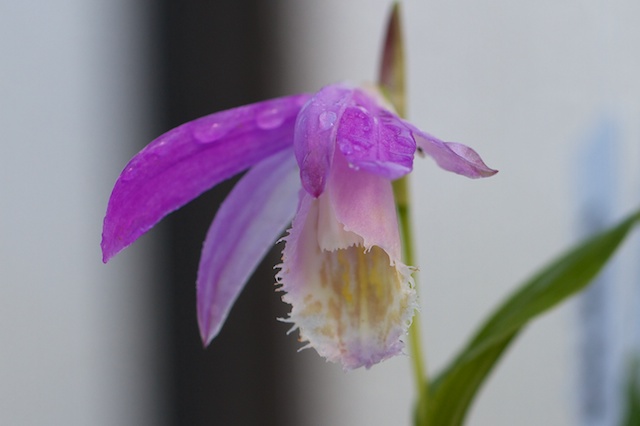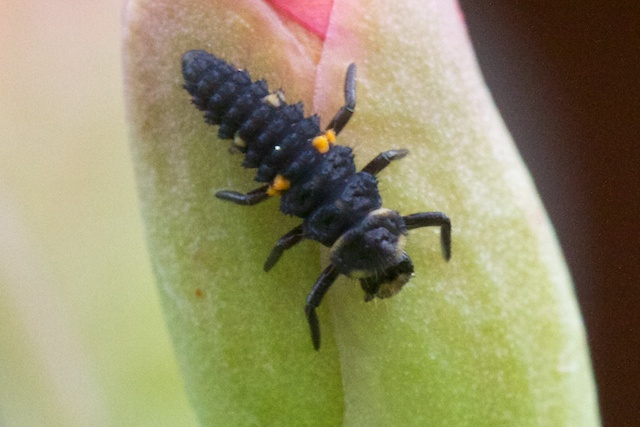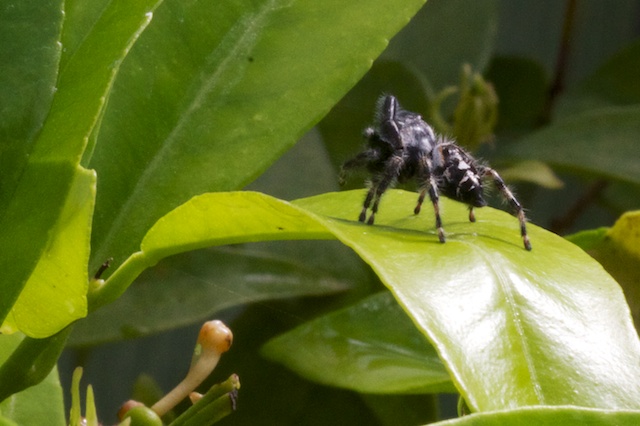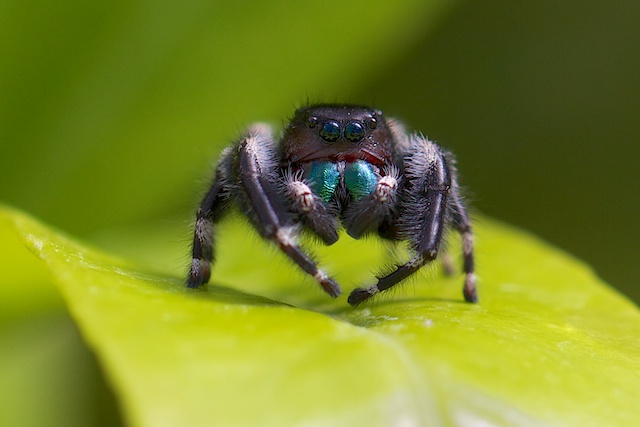When you are using your greenhouse to grow special plants like Lewisia tweedyi or Pleione formosana, or seedlings of an unusual western rock cress, you might be forgiven by reacting to the first sign of aphids with an immediate fog of insecticide. However, I decided last winter that I would try to make the greenhouse as much of a natural environment as I could. The windows open to the out of doors on warm days without screens so that insects are free to come and go. The greenhouse manufacturer said that people liked this idea for pollination but I was thinking more about insect control.
In early December when I first began operations I saw a few ladybugs taking refuge from the cold. I had hoped they might settle in, perhaps laying eggs. And last week I saw my first ladybug larva busily patrolling the leaves for aphids.
They are voracious eaters (think of teenagers eating between meals).
And yesterday I spied a praying mantis.
I had seen an egg case in the hillside garden and put it into the greenhouse in February. Though I never saw the hatching take place, they are apparently growing fast. Unfortunately a few minutes later I saw this one get trapped in a spider’s web. While both seemed to be about the same size, the spider definitely won the battle. But there should be many more praying mantis wandering around the greenhouse at this point.
While i was watching the praying mantis and spider struggle I looked up and saw the dominant actor in the food chain.
This guy was alert and ready for action. So while I do see aphids here and there, nature’s enforcer’s are busy keeping things within bounds.






